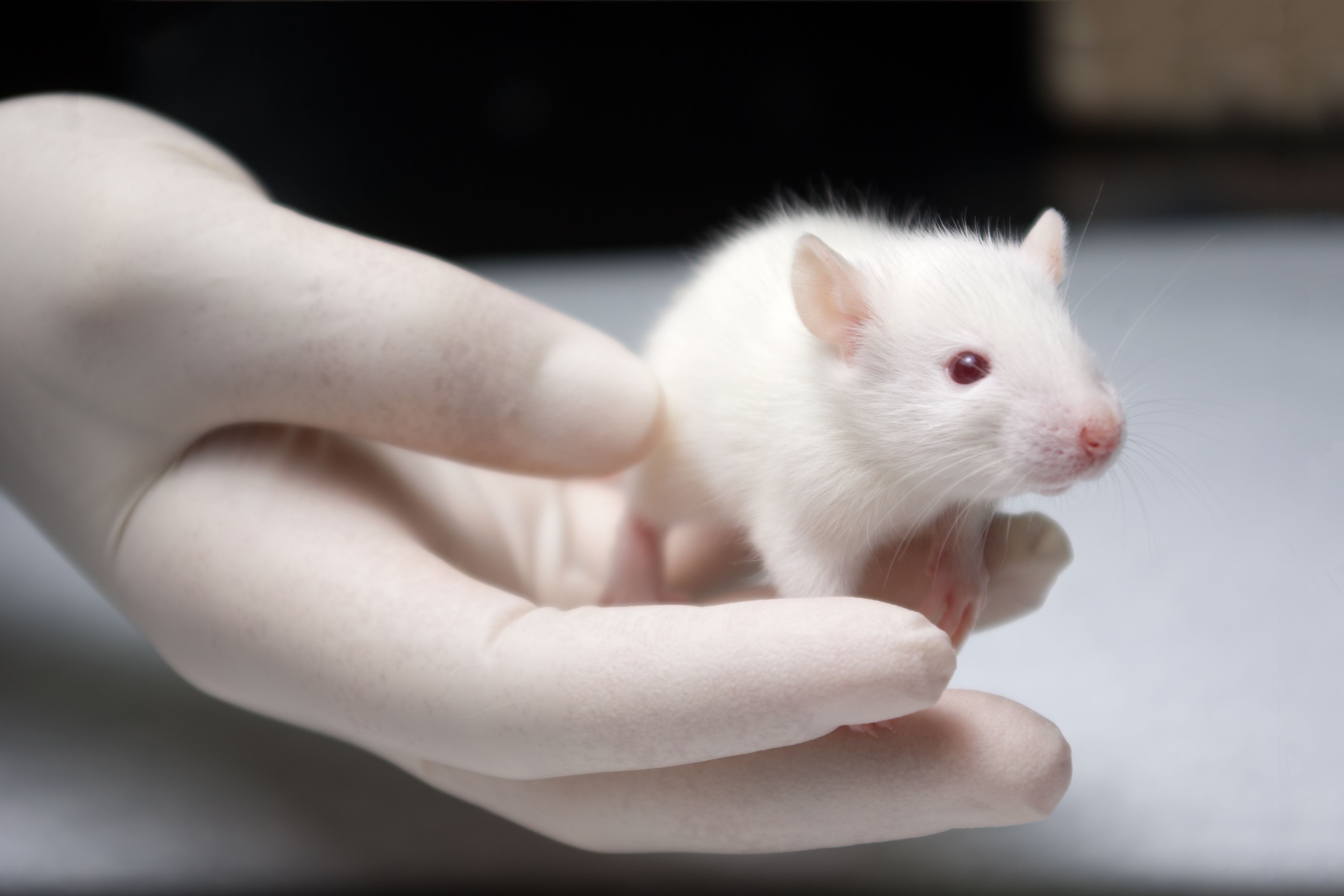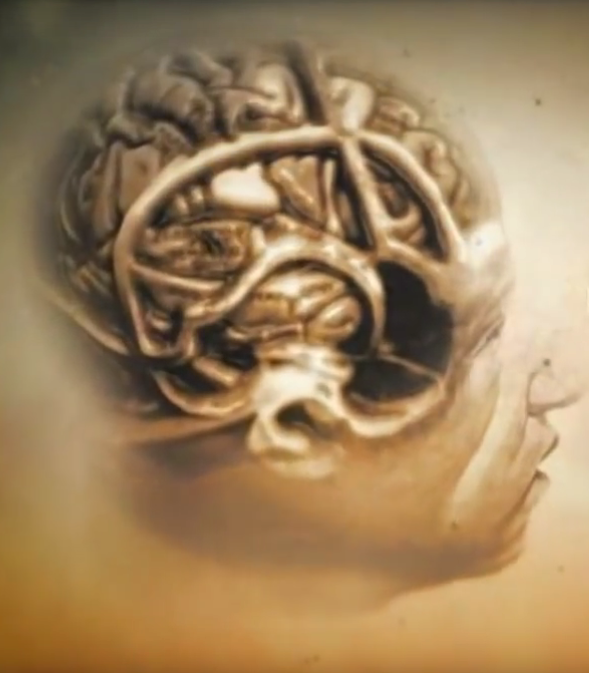
by admin | Nov 5, 2015 | Uncategorized
Scientific breakthroughs happen every day! In an effort to help our patients stay up to speed on the most cutting edge treatment options available for them, our scientists monitor current research and publish weekly research updates. The title of each article below is a link to the full study report. If you’d like to make an appointment with Dr. Hanna to discuss your treatment options, please contact us.
Ketamine
Innate immunity of surfactant proteins A and D in urinary tract infection with uropathogenic Escherichia coli
F Hu, G Ding, Z Zhang, LA Gatto, S Hawgood… – Innate Immunity, 2015
… UTI was induced as previously described, 30 with some modifications. In brief, mice were
anesthetized by ip injection with ketamine/xylazine (90 mg/kg ketamine and 10 mg/kg xylazine),
and were gently massaged and pushed down on the bladder to expel urine. …
[PDF] Comparison of propofol and ketofol in minor gynecologic interventions
Y Işık, Z Kurdoğlu, U Göktaş, İ Katı, D Sözen – J Clin Exp Invest www. jceionline. org …, 2015
… Propofol is administered as an infusion instead of in repeated doses, which prevents
dose-dependent respiratory and cardiovascular system depression and pro- vides controlled
sedation [1]. Ketamine is preferred for premedication, anesthesia induction and main- tenance …
Anesthesia Complications of Pediatric Radiotherapy
V Verma, AB Beethe, M LeRiger, RR Kulkarni, M Zhang… – Practical Radiation …, 2015
… While agents such as ketamine (complication rates approaching 23-24%) have been used
in the past, other agents such as propofol and volatile anesthetics have lower complication
rates due to improved drug side effect profiles (0.01-3.5%). …
[HTML] Stress activates the nucleus incertus and modulates plasticity in the hippocampo-medial prefrontal cortical pathway
R Rajkumar, Y Wu, U Farooq, WH Tan, GS Dawe – Brain Research Bulletin, 2015
… Ketamine (Parnell Manufacturing Pty Ltd; Alexandria, NSW, Australia), xylazine (Ilium Xylazil,
Troy Laboratories Pty Ltd; Glendenning, NSW, Australia), enrofloxacin (Baytril 5%, Bayer Health
Care; Seoul, Korea) and carprofen (Carprieve, Norbrook Laboratories (GB), Ltd …
The role of glutamatergic, GABA-ergic, and cholinergic receptors in depression and antidepressant-like effect
K Pytka, A Dziubina, K Młyniec, A Dziedziczak… – Pharmacological Reports, 2015
Depression is one of the most common mental disorders and social issue worldwide. Although
there are many antidepressants available, the effectiveness of the th.
[HTML] Communicating with mismatch and tension: treatment provision experiences of primary care doctors treating patients with overactive bladder in Hong Kong
JY Siu – BMC Family Practice, 2015
… [P6]. During the study period, the symptoms of OAB, particularly urinary frequency and
urinary incontinence, were identified by government antisubstance abuse public service
announcements as signs and consequences of ketamine abuse. …
Hydrogen sulfide (H 2 S) attenuates uranium-induced acute nephrotoxicity through oxidative stress and inflammatory response via Nrf2-NF-κB pathways
J Zheng, T Zhao, Y Yuan, N Hu, X Tang – Chemico-Biological Interactions, 2015
… sacrificed. After urine collection, rats were anesthetized by an ip injection of
ketamine-xylazine (50 mg/kg ketamine and 5 mg/kg xylazine), and blood samples
were obtained directly from the heart ventricle in anesthetized animals. …
[PDF] General discussion and future perspectives
SA Bouwense, M de Vries, LT Schreuder, SS Olesen… – PDF hosted at the Radboud …, 2015
… even if technically successful. If central nervous system pain processing is altered,
specific treatment targeting these changes should be instituted (eg gabapentinoids,
ketamine or tricyclic antidepressants). Suitable tools are …
Propofol target-controlled infusion for sedated gastrointestinal endoscopy: A comparison of propofol alone versus propofol–fentanyl–midazolam
CD Hsu, JM Huang, YP Chuang, HY Wei, YC Su… – The Kaohsiung Journal of …, 2015
… The currently used regimens include propofol, benzodiazepines (such as midazolam and
diazepam), opioids (such as fentanyl and remifentanil), ketamine, and de-dexmedetomidine
[3], [4], [5] and [6]. Among them propofol has become popular in developed countries, because …
[PDF] A Critical Case of Closed Cervix Pyometra in a Bitch
JK Agrawal, A Saxena, P Kumar, A Patel – International Journal of Livestock Research, 2015
… General anethesia was induced and maintained by a combination of ketamine hydrochloride @
5mg/kg and Xylazine @ 0.2mg/kg body weight intravenously following premedication with atropine
sulphate @ 0.04mg/kg body weight. Laparotomy was performed …
Radiofrequency Ablation (RFA)
Treatment of Neuroendocrine Liver Metastases
HA Farley, RF Pommier – Surgical Oncology Clinics of North America, 2015
… Treatment options: radiofrequency ablation. RFA is another technique used to treat
neuroendocrine metastases of the liver, but it has limitations. One can ablate a limited number
of lesions (generally up to 5), of limited size (generally <5 cm in diameter), provided they are …
[PDF] Ablative Techniques in Advanced Pancreatic Cancer: Do They Affect The Quality of Life?–Review
D Dimitrov, H Feradova, D Gincheva, L Dall’Olio – JOP. J Pancreas (Online), 2015
… Such ablative therapies are high-intensity focused ultrasound (HIFU), radiofrequency
ablation (RFA), irreversible electroporation (IRE), iodine-125, iodine-125–cryosurgery,
photodynamic therapy (PDT) and microwave ablation [8]. …
Minimally Invasive Techniques for Resection of Pancreatic Neuroendocrine Tumors
GGF Ranvier, D Shouhed, WB Inabnet – Surgical Oncology Clinics of North America, 2015
Please note that Internet Explorer version 8.x will not be supported as of January 1,
2016. Please refer to this blog post for more information. Close. …
[HTML] Colorectal Liver Metastasis, Primary Gallbladder Carcinoma and Myelofibrosis Present Simultaneously in a Liver Resection Specimen
SA Gray, MH Raber, E Provoost, GJ Toes, JM Klaase – Case Reports in …, 2015
… An elective operation was scheduled, and the surgeon performed a wedge resection of segments
5 and 7 of the liver, and a radiofrequency ablation was used to treat a lesion in segment 3.
Although the suspicion of gallbladder carcinoma at the time of surgery was low, the …
Nontraumatic Cervical Spine for Primary Care Providers
CR Hemmer – The Journal for Nurse Practitioners, 2015
… physical therapy, a home traction unit, transcutaneous electrical nerve stimulation, epidural steroid
injections, selective nerve root blocks (transforaminal injections), botulinum toxin type A injections,
medication management, radiofrequency ablation, and surgical correction. …
Surgical Management of Adrenocortical Carcinoma: An Evidence-Based Approach
J Datta, RE Roses – Surgical Oncology Clinics of North America, 2015
Please note that Internet Explorer version 8.x will not be supported as of January 1,
2016. Please refer to this blog post for more information. Close. …
SYSTEM AND METHOD FOR RECONSTRUCTING CARDIAC SIGNALS ASSOCIATED WITH A COMPLEX RHYTHM DISORDER
S Narayan, R Sehra – US Patent 20,150,289,807, 2015
… For instance, ablation success for atrial tachycardias (a ‘simple’ disorder) may be as low as 70%. …
Thus, ablating the cause of a heart rhythm disorder can be challenging, and even experienced
practitioners may require hours to ablate certain ‘simple’ rhythm disorders …
[HTML] RADIONUCLIDE IMAGING AND THERAPY OF NEUROENDOCRINE TUMOURS
S Navalkissoor, G Gnanasegaran – Journal of Cancer & Allied Specialties, 2015
… These include surgical debulking, chemotherapy, molecular targeted therapies (eg sunitinib
and everolimus), interferon, somatostatin analogues, local therapies (eg radiofrequency ablation
or embolisation) and peptide receptor radionuclide therapy (PRRT). …
[PDF] Successful Radiofrequency Pulmonary Vein Isolation In A Patient With Pneumonectomy
F Kilicaslan, EE Gul, C Erol
… Circumferential radiofrequency ablation of ipsilateral PVs was done (30-35 W, 17
mL/min) with irrigated catheter (Sprinklr, Medtronic, Minneapolis, USA) and both,
entrance and exit blocks were achieved after the ablation. Interestingly …
[PDF] Ablation Is A Treatment Option Without Permanent Pacemaker Implantation For Bradycardia With Persistent Atrial Fibrillation
W Yamada, K Tanimoto, M Yamada, K Inagawa…
… Page 5. Rotational Atriography Of Left Atrium – A Imaging Technique Used To Support Left Atrial
Radiofrequency Ablation: A Comparison Of Anatomical Data Of Left Atrium F. Lehar, Z. Starek,
J. Jez, J. Wolf, T. Kulik, A. Zbankova, M. Novak Department of Cardiology, ICRC/St. …
Complex Regional Pain Syndrome (CRPS/RSD)
[PDF] Do insiders trade on mispricing after earnings announcements?
JP Fidrmuc, J Novák, H Contreras – 2015
Page 1. Do insiders trade on mispricing after earnings announcements? Jana P.
Fidrmuc∗ Warwick Business School Jirı Novák† Charles University Harold Contreras‡
Warwick Business School October 21, 2015 Abstract This …
[PDF] A predictive framework for evaluating models of semantic organization in free recall
NW Morton, SM Polyn – Journal of Memory and Language, 2015
Research in free recall has demonstrated that semantic associations reliably influence the
organization of search through episodic memory. However, the specific.
6-, 7-, OR 8-SUBSTITUTED QUINAZOLINONE DERIVATIVES AND COMPOSITIONS COMPRISING AND METHODS OF USING THE SAME
GW Muller, H Man – US Patent 20,150,291,555, 2015
… Examples of diseases or disorders include, but are not limited to, cancer, disorders associated
with angiogenesis, pain including, but not limited to, Complex Regional Pain Syndrome (“CRPS”),
Macular Degeneration (“MD”) and related syndromes, skin diseases, pulmonary …
[PDF] Psychological distress and stressful life events in pediatric complex regional pain syndrome
MD Hannah Brehmer, MD Boris Zernikow
… Complex regional pain syndrome (CRPS) is increasingly recog- nized as a serious pain
disorder in children and adolescents. … Specifically, it is not known which factors precipitate
CRPS and which result from the ongoing painful disease. …
[PDF] In the High Court of New Zealand Wellington Registry
L SEALES, SAOFL SEALES
… Pain News 11 (1) 2013 pages 30-33. Safarfashandi Z, Munglani R, Safarfashandi L, Sadheura
J, Jenner C “The incidence of complex regional pain syndrome (CRPS) post trauma and the
possible role of tight plaster of Paris in the aetiology of CRPS“. …
[PDF] Assessment Report
CO Onyango, Y Suwa, Y Pinto
… directory ….. 18 – Table 5: List of ASTI publications in Phase II 3 ….. 20 Table 6: Summary of
ex-post impact assessments by CGIAR Centres, CRPs and SPIA ….. 29 …
[PDF] Hereditary Immunity against Infectious Diseases
IA Shabarov, ZI Urmancheeva, SN Rumyantsev…
Page 1. 1 Innovative Immunology | www.austinpublishinggroup.com/ebooks Copyright
© Rumyantsev SN.This book chapter is open access distributed under the Creative
Commons Attribu- tion 4.0 International License, which …
Encyclopedia of Exploration Geophysics
M this Chapter
Page 1. U1-1 Abstract To produce a reliable image of the subsur- face, we must use
a depth-migration scheme that requires a detailed model of the parameter fields for
use by migration. Obtaining reliable values of all parameters …
Fibromyalgia
[PDF] Does “Multiple Labeling” Benefit or Harm in Fibromyalgia Patients
E Trallero, C Alegre – Fibrom open, 2015
A systematic review showed that there is no evidence an accurate diagnosis of fibromyalgia
per se could worsen prognosis in patients with this condition [1]. Indeed, it could be useful to
reduce healthcare utilization by patients. Nevertheless, social and individual long-term …
[PDF] Comparison between Depression Levels of Women with Knee Osteoarthritis, Rheumatoid Arthritis, and Fibromyalgia Syndrome: A Controlled Study
D Karşılaştırılması, BK Çalışma – 2015
DOI: 10.5152/tftrd.2015.87894 Turk J Phys Med Rehab 2015;61:197-202 Türk Fiz Tıp Rehab
Derg 2015;61:197-202 … Comparison between Depression Levels of Women with … Diz
Osteoartrit, Romatoid Artrit ve Fibromiyalji Sendromlu Kadınlarda Depresyon …
NOVEL BIPHENYL DERIVATIVE OR PHARMACEUTICALLY ACCEPTABLE SALT THEREOF, AND PHARMACEUTICAL COMPOSITION FOR PREVENTING OR …
CH Lee, K Lee – US Patent 20,150,291,509, 2015
… group consisting of dermatitis, allergy, atopy, conjunctivitis, periodontitis, rhinitis, tympanitis,
pharyngolaryngitis, tonsillitis, pneumonia, gastric ulcer, gastritis, Crohn’s disease, colitis, irritable
colitis, hemorrhoids, gout, ankylosing spondylitis, lupus, fibromyalgia, psoriasis, arthritis …
[PDF] Recent advances in massage therapy–a review
SL LIU, W Qi, H Li, YF WANG, XF YANG, ZM LI, Q Lu… – Eur Rev Med Pharmacol Sci, 2015
… in animal models. In a randomized trial conducted by Ekici et al13, application of
MLD to women with fibromyalgia resulted in improvements regarding pain, health
status, and health-related quality of life. Lancaster and Crow14 …
Immediate Effect of Basic Body Awareness Therapy on Heart Rate Variability
AM Mantovani, CEPT Fregonesi, RMR Lorençoni… – … Therapies in Clinical …, 2015
To determine the immediate effect of a Basic Body Awareness Therapy (BAT) session on
measures of heart rate variability (HRV) in healthy young people.13 healthy.
[PDF] Radial shock wave therapy in the treatment of lateral epicondylitis
JD Rompe, J Decking, C Schoellner, C Theis…
… P009-e Gait analysis: An objective measurement for subgrouping fibromyalgia patients B. Auvinet
a,*, D. Chaleil b, J. Cabane c, A. Dumolard d, P. Hatron e, R. Juvin d, M. Lanteri-minet f, Y. Mainguy
g, L. Negre-pages h, F. Pillard i, D. Riviere i, Y. Maugars j a Clinique, 8, rue des …
2-OXO-2, 3-DIHYDRO-INDOLES FOR THE TREATMENT OF CNS DISORDERS
D Brunner, J Malberg, BG Shankar, S Kolczewski… – US Patent 20,150,284,386, 2015
… Fibromyalgia, which is a syndrome characterized by chronic generalized pain associated with
different somatic symptoms, such as sleep disturbances, fatigue, stiffness, balance problems,
hypersensitivity to physical and psychological environmental stimuli, depression and …
HETEROARYL COMPOUNDS AND METHODS OF USE THEREOF
JE Campbell, P Jones – US Patent 20,150,291,626, 2015
… affective disorder, seasonal affective disorder, obsessive-compulsive disorder, attention deficit
disorder, attention deficit hyperactivity disorder, vertigo, pain, neuropathic pain, sensitization
accompanying neuropathic pain, inflammatory pain, fibromyalgia, migraine, cognitive …
[PDF] How is Qigong Conducive to Women’s Health
FK Cheng – Int J Complement Alt Med, 2015
… Likewise, Tai Chi is beneficial for treating fibromyalgia, achieving better symptomatology,
aerobic capacity, dynamic balance, body strength, and walking distance [112]. Psychological
health: Studies inform the effects of Baduanjin on mental well-being. …
[HTML] Recommendations to the primary care practitioners and the patients for managing pelvic pain, especially in painful bladder syndrome for early and better prognosis
KJ Chung, ANY Han, KH Kim – Journal of Exercise Rehabilitation, 2015
… Scholar]. Nickel JC., Tripp DA., Pontari M., Moldwin R., Mayer R., Carr LK., Doggweiler R., Yang
CC., Mishra N., Nordling J. Interstitial cystitis/painful bladder syndrome and associated medical
conditions with an emphasis on irritable bowel syndrome, fibromyalgia and chronic …








